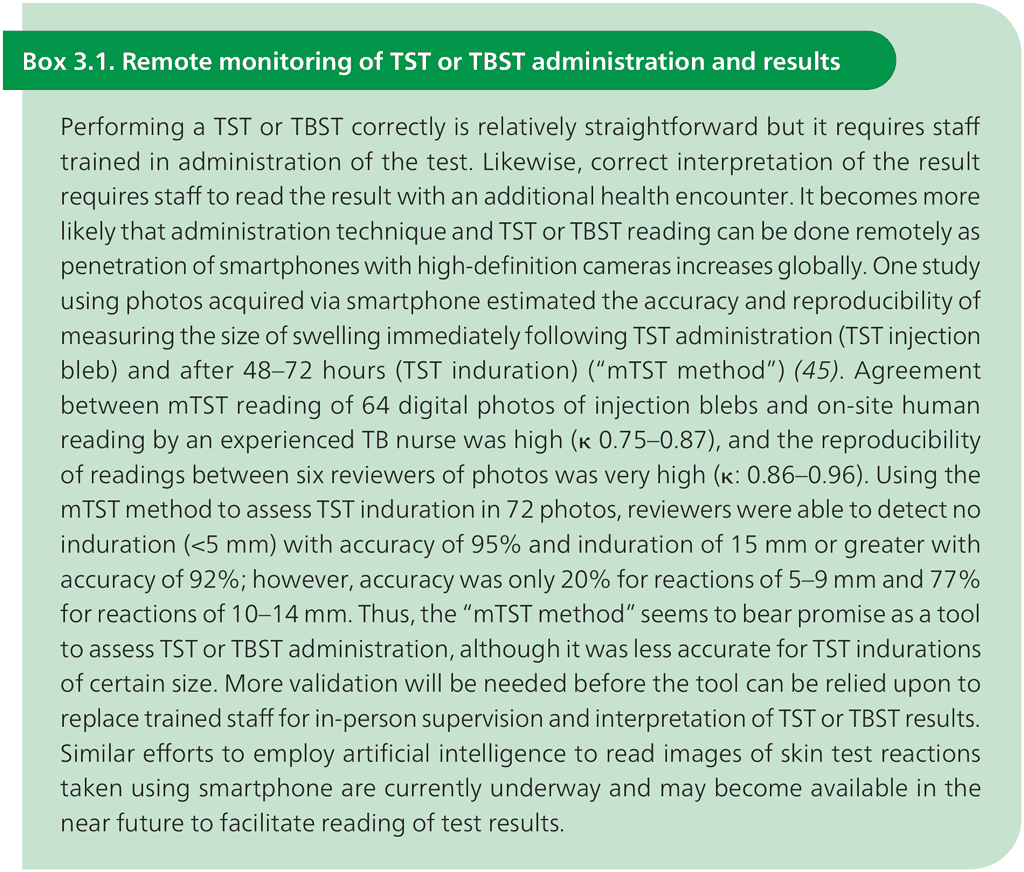Перекрёстные ссылки книги для 3.3.3 Training and quality control
As with any diagnostic test, correct technique in administration and reading of the test is essential for accurate, reproducible and valid test results. Therefore, personnel require initial training, mentoring and ongoing supervision to maintain quality (42). Training for reading of tuberculin reactions is ideally done at a large centre where large numbers of people receive TB infection skin tests regularly. In this way, in a relatively short amount of time, trainees can practise the reading of indurations of different sizes and consistency. On-site training is more complicated to organize when the supervisors are not present on site but make occasional monitoring visits.
Independent online resources are available to explain the optimal procedures for tuberculin skin test administration (43) and reading (44) (these can be adapted for use with other TBSTs).
Remote monitoring of TST administration and interpretation as an aid to staff training and quality control (QC) has been studied (45) (Box 3.1). In this study, this “mTST method” tested a procedure whereby individuals who administer and read TST are also trained to take photos (using a smartphone) of the administration and reading sites. These photos, combined with the initial readings by the health care worker, are sent to the supervisor and feedback is given (by email or phone). Online videos are available showing reviewers performing quality assurance (QA) for the TB infection skin test (46) and how to take mTST photos (47).

 Обратная связь
Обратная связь